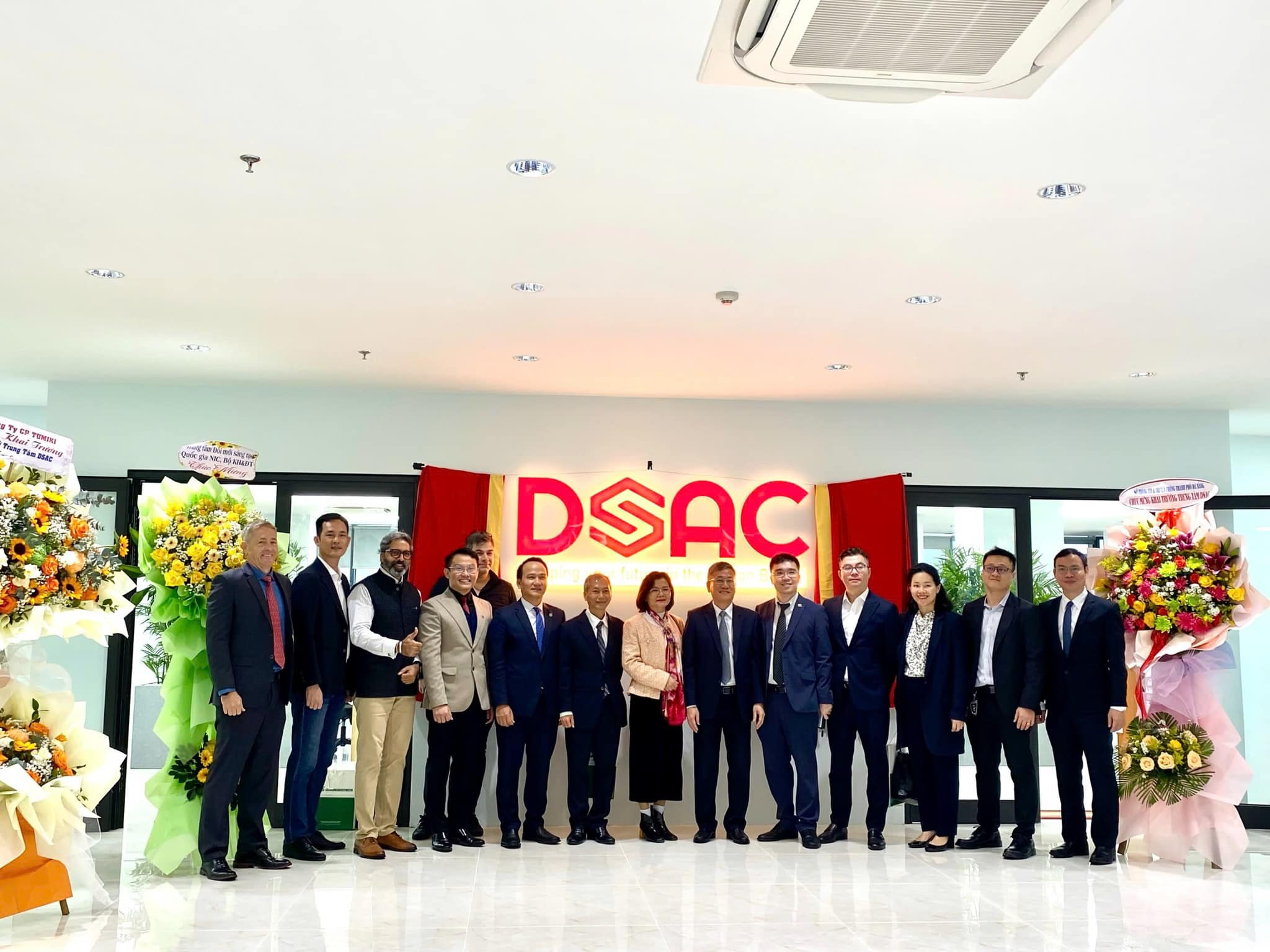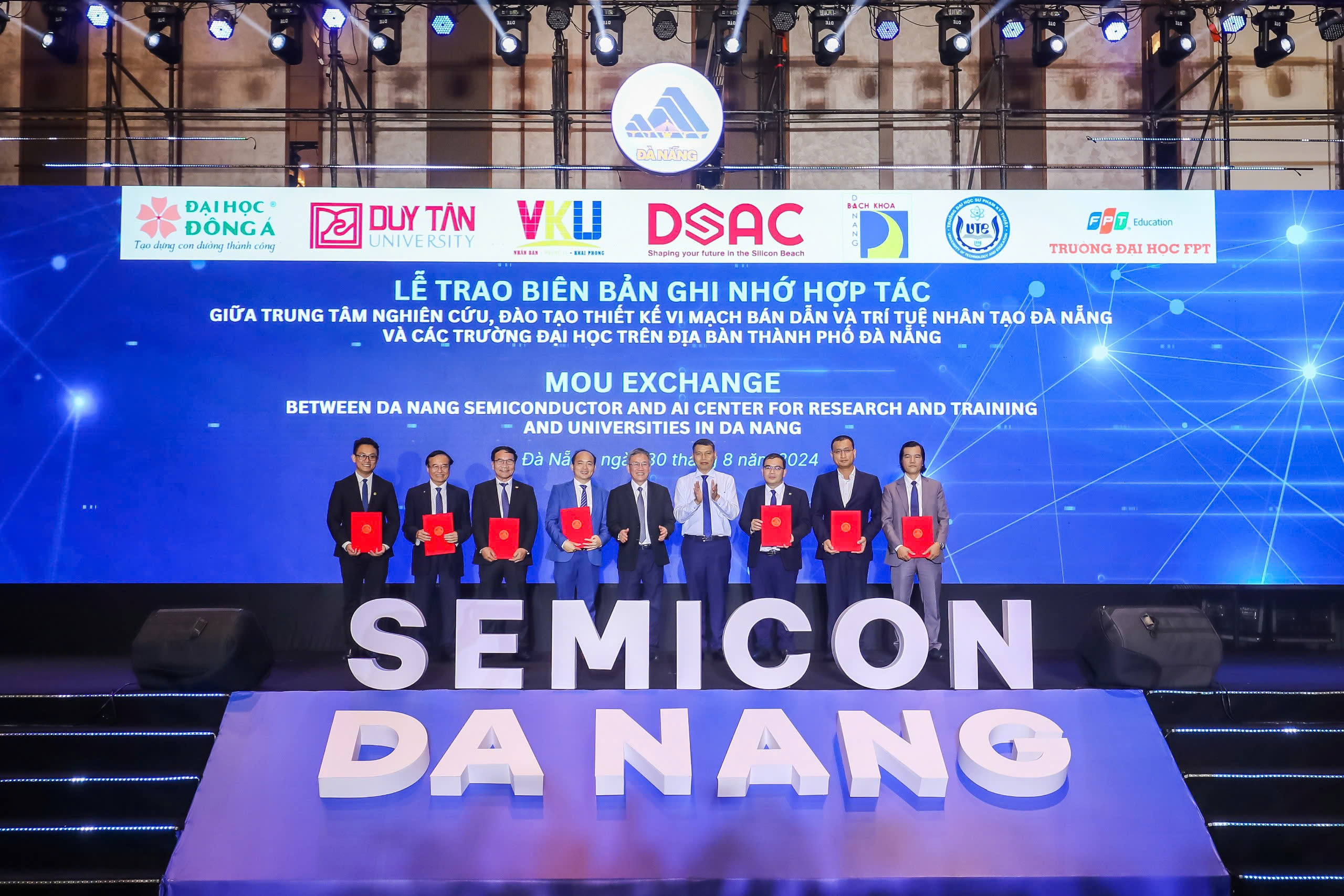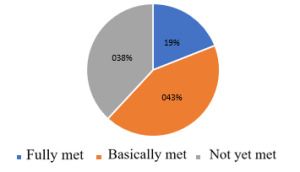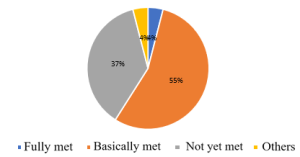TRAINING PROGRAM
With a people-centered approach, DSAC designs flexible and in-depth training programs tailored to meet learning needs and skill development in high-tech industries.

With a people-centered approach, DSAC designs flexible and in-depth training programs tailored to meet learning needs and skill development in high-tech industries.

Training programs in semiconductor technology and artificial intelligence at domestic universities are rapidly developing, offering students comprehensive knowledge in chip design and AI applications. With modern learning environments and experienced faculty, students participate in real-world projects and acquire essential skills to become leading experts, contributing to the advancement of the high-tech industry in the country.
DETAILTraining programs in semiconductor technology and artificial intelligence at international universities provide students with advanced knowledge and practical skills in high-tech fields. Under the guidance of leading experts and supported by state-of-the-art facilities, students experience a diverse learning environment and participate in both research and real-world application projects. These programs not only build a strong foundation in semiconductors and AI but also open up global career development opportunities.
DETAIL
Corporate training programs in semiconductor technology and artificial intelligence offer practical knowledge and hands-on skills directly within the working environment. Under the guidance of industry-leading experts, trainees gain access to advanced technologies, engage in real-world projects, and tackle technical challenges. These programs not only enhance professional competencies but also broaden career prospects, meeting the growing demands of the modern tech market.
DETAILThe list of semiconductor and artificial intelligence companies in Vietnam provides detailed information about leading firms in these fields, including contact details, addresses, and key areas of operation. This helps viewers identify job opportunities and career development paths within this highly promising industry.
DETAIL
DSAC regards the development of state-of-the-art education institutions as fundamental to cultivating high-quality human resources in semiconductors and artificial intelligence.

1. Quantity and Demand for Semiconductor Microchip and Artificial Intelligence Workforce.
As of the end of 2023, the city has more than 52,500 IT personnel, of which 25,000 work in software and digital content (46% of the total IT workforce, compared to 18% nationwide). The IT workforce represents 8.5% of the city’s total workforce (versus 3.7% nationally). Unlike the labor‑intensive electronics sector, the software and digital content fields are staffed mainly by well‑trained, dynamic specialists capable of proposing solutions for digital transformation and smart city initiatives. According to a survey by the Department of Information and Communications, there are currently about 600 microchip design engineers in the city.
Based on assessments of both domestic and international contexts, Da Nang aims to have around 20 microchip design companies by 2030, each employing on average 100–130 people (with Synopsys alone exceeding 500). Accordingly, the total number of semiconductor microchip design engineers in Da Nang enterprises by 2030 is expected to be about 2,000–2,600. The target of 2,000 engineers assumes annual recruitment growth of 10–15% from existing design firms and foreign companies opening offices in Da Nang; in reality, the 10 currently operating firms recruit at a rate of about 15–20% per year. It is also projected that by 2030 an additional 1,500 Vietnamese engineers will work abroad, and Da Nang could aim to supply 100–150 of them. Thus, by 2030 the city needs to train 1,500–2,000 semiconductor microchip design engineers—80–90% specializing in Digital Design and 10–20% in Analog Design.
In testing, packaging, and manufacturing: by 2030 the city aims to attract at least 1–2 ATP projects requiring some 2,000–3,000 engineers and technicians locally, plus 200–300 engineers abroad for testing, packaging, and manufacturing (Da Nang plans to partner with key packaging and testing firms in Taiwan, Oregon, and Arizona…).
2. Training for Semiconductor Microchip and Artificial Intelligence Workforce.
The city currently has 38 IT training institutions, including 20 universities and colleges and 18 vocational or non‑formal training centers. Among the universities and colleges, 17 offer IT majors and 13 offer majors related to semiconductors and AI (Electronics–Telecommunications, Mechatronics, Automation, Statistical Informatics, Construction Informatics, etc.). The total IT enrollment quota in the city is about 6,500 students. Da Nang’s IT workforce is also supplemented by graduates from nearby and national institutions. The number of lecturers teaching semiconductor microchip and AI‑related majors in Da Nang is shown in Table 4.
Table 4: Number of Lecturers in Semiconductor Microchip and AI‑Related Majors in Da Nang
| University | DHBK | DHSPKT | VKU | Duy Tân | FPT | Đông Á | VNUK | Total |
|---|---|---|---|---|---|---|---|---|
| Number of Lecturers | 65 | 15 | 144 | N/A | 42 | 10 | 24 | 300 |
| Number of Engineers/Bachelor’s | 14 | 1 | 3 | 18 | ||||
| Number of Master’s | 4 | 11 | 69 | 22 | 5 | 17 | 128 | |
| Number of PhDs | 54 | 3 | 57 | 19 | 2 | 6 | 141 | |
| Number of Associate Professors/Professors | 7 | 1 | 4 | 1 | 13 |
By August 2024, Da Nang will have three recruiting units (with about 170 quotas) for the first batch of semiconductor microchip engineering students (University of Science and Technology, Vietnam–Korea University of ICT, University of Technical Education). For graduates of related majors, the annual quota is about 1,000. For AI fields, the city trains over 300 yearly, and for AI‑related majors over 2,000. These figures inform the targets and capacity for training semiconductor microchip and AI workforce in Da Nẵng, detailed in Tables 5 and 6.
Table 5: Number of Students in Majors Related to Semiconductor Microchips, Da Nang
| No. | Major | Total | ||
|---|---|---|---|---|
| Final‑Year Students | Graduates within 12 Months | Graduates within 12–24 Months | ||
| 1. | Microchip Design Engineering | 0 | 0 | 0 |
| 2. | Embedded Systems | 93 | 58 | 92 |
| 3. | Electrical/Automation | 98 | 89 | 173 |
| 4. | Mechatronics | 130 | 130 | 260 |
| 5. | Chemical Engineering | 0 | 10 | 60 |
| 6. | Materials Technology | 2 | 2 | 2 |
| 7. | Electrical & Electronic Engineering Technology | 179 | 97 | 115 |
| 8. | Electronics – Telecommunications Engineering Technology | 377 | 280 | 524 |
| 9. | Control & Automation Engineering Technology | 141 | 54 | 54 |
| Current Total of Microchip‑Related Majors | 0 | 0 | 0 | |
| Current Total of Related Majors | 1,020 | 720 | 1,280 | |
Based on survey results from the Department of Information and Communications among semiconductor and AI enterprises, the workforce quality is generally sufficient, but some companies still face difficulties recruiting highly qualified personnel (Figures 11 & 12).
Table 6: Number of Students in Majors Related to Artificial Intelligence, Da Nang
| No. | Major | Total | ||
|---|---|---|---|---|
| Final‑Year Students | Graduates within 12 Months | Graduates within 12–24 Months | ||
| 1. | Artificial Intelligence | 94 | 60 | 99 |
| 2. | Data Science | 153 | 77 | 123 |
| 3. | Computer Science | 150 | 101 | 170 |
| 4. | Computer Networks | 80 | 45 | 87 |
| 5. | Software Engineering | 797 | 523 | 766 |
| 6. | Information Systems | 73 | 85 | 141 |
| 7. | Information Technology | 1,537 | 875 | 811 |
| 8. | E‑commerce | 35 | 30 | 55 |
| 9. | Computer Engineering | 60 | 0 | 0 |
| 10. | Computer Engineering Technology | 23 | 27 | 4 |
| Total AI Majors | 397 | 238 | 392 | |
| Total Related AI Majors | 2,715 | 1,638 | 2,010 | |
The city of Da Nang also organized the Kickoff Ceremony for the workforce training program and the first cohort of 25 instructor trainers in microchip design. Three universities in the city have initially announced new enrollment for microchip design engineers in 2024 with 170 planned quotas, and three conversion training classes have been opened for students from related majors, with 41 students and 59 instructors.

Figure 1: Company assessment chart of semiconductor microchip workforce

Figure 2: Company assessment chart of artificial intelligence workforce


For any inquiries, cooperation opportunities, or training program registration, please contact DSAC – Da Nang Semiconductor and Artificial Intelligence Center. We are always ready to accompany you on your journey of innovation and technological development.